Photography exhibitions have long held a special place in the hearts of Australians, consistently drawing significant crowds at our museums and galleries. They have been an integral component of our cultural heritage since the mid-19th century.
Here are ten exhibitions that represent some key chapters in this history.
1. J. W. Newland’s ‘Daguerrean Gallery’, Sydney, 1848
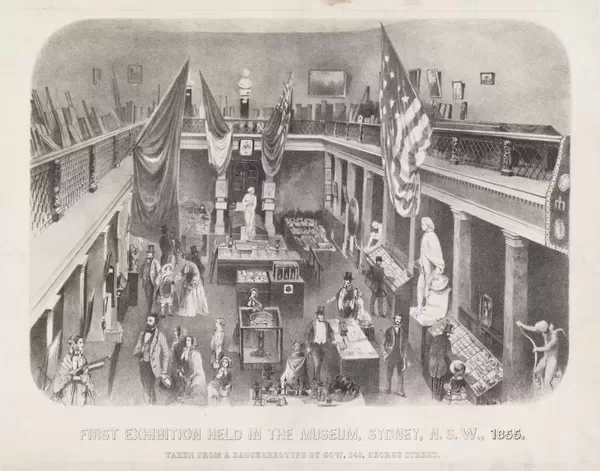

In 1848, attendees of Australia’s inaugural photography exhibition ascended the stairs above a centrally located wine and spirits shop in Sydney, arriving at the studio of J. W. Newland. Fresh from an extensive journey spanning nearly three years, which took him from New Orleans through Central and South America, across the Pacific to New Zealand, and finally to Sydney, Newland presented 200 daguerreotypes.
These delicate images, etched onto polished silver plates, ranged in size from that of an iPad to an iPhone. Visitors were treated to “views” of notable Pacific ports, such as Callao in Peru, “specimens” showcasing diverse Indigenous cultures, and “likenesses” of renowned figures they had previously only encountered in newspapers. Among these luminaries was Queen Pomare IV of Tahiti, who had famously become embroiled in the colonial power struggle between France and Britain.
Furthermore, visitors had the opportunity to have their own portraits captured for inclusion in the gallery, contributing to the collection that Newland proudly advertised as encompassing “two thirds of the globe.”
2. The Australian Intercolonial Exhibition, Melbourne, 1866
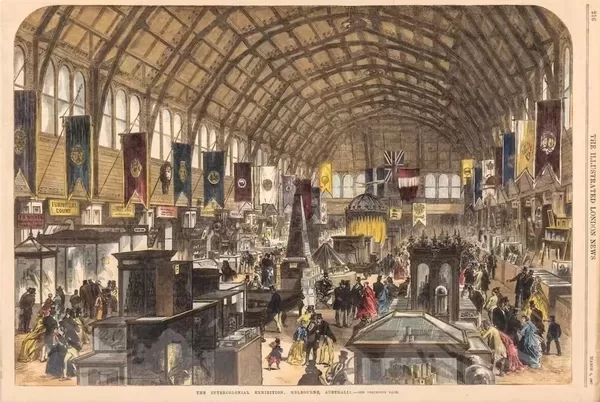

In 1866, on the site where Victoria’s State Library now stands, two purpose-built timber exhibition halls were brimming with goods from the ten Australasian colonies for the inaugural Intercolonial Exhibition. The abundance of photographs nestled amidst the array of exhibits held such significance that they garnered their own review in the now-defunct Australian Monthly Magazine.
The writer, a “wanderer amongst the photographic views,” lauded these images as exemplifying “the high standard of taste to which we, as inhabitants of new colonies, have arrived.” Much like the pyramid-shaped “trophies” showcasing canned goods and confectionery strategically placed throughout the exhibition, the photographs served as a visual and quantifiable representation of colonial prosperity.
The essence of scale and spectacle was paramount. Numerous depictions of newly constructed colonial edifices were reproduced through contact printing from substantial glass plate negatives measuring 25 x 30 cm. Among the remarkable visuals, a multi-paneled panorama of Sydney extended to over a meter in length. Visitors could peer through the binocular lenses of a stereoscope, which allowed them to experience a series of 3D views of Hobart, created by pairing images taken from slightly different angles.
3. Harold Cazneaux’s ‘One Man Show’, Photographic Society of New South Wales, Sydney, 1909
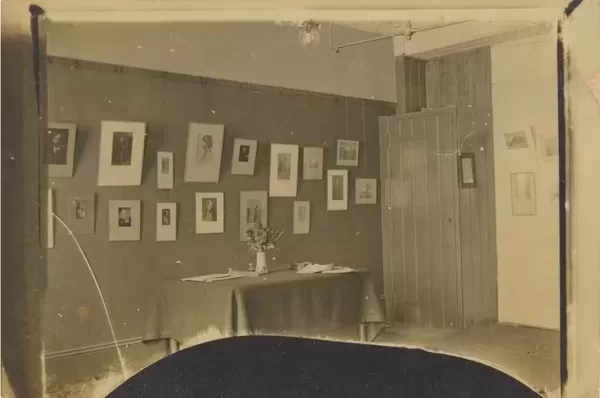

As the 19th century gave way to the 20th century, the landscape of Australian photography underwent a profound transformation through the self-consciously artistic movement known as Pictorialism. In 1909, a prominent figure in this movement, Harold Cazneaux, made history by hosting the very first solo exhibition by an individual Australian photographer.
This groundbreaking exhibition featured a collection of 26 images encompassing portraits, landscapes, seascapes, harbor vistas, and charming cityscapes. Cazneaux’s intent was to demonstrate what “any energetic camera enthusiast could capture in a brief lunch hour, provided they possessed the ‘discerning eye.'”
With great pride, Cazneaux meticulously recorded the tasteful arrangement of his exhibition in the rooms of the Photographic Society of New South Wales in Sydney. Each photograph was thoughtfully mounted within a wide cardboard mat and elegantly framed. Each print was individually numbered, cross-referencing a catalog thoughtfully placed on a table adorned with a vase of fresh flowers. Cazneaux’s innovative approach would go on to serve as a model for countless future photographer exhibitions.
4. Wolfgang Sievers and Helmut Newton’s New Visions in Photography, Federal Hotel, Melbourne, 1953
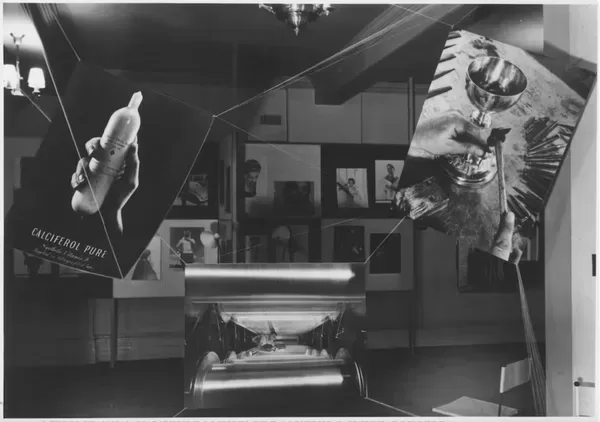

In 1953, within the confines of Melbourne’s Federal Hotel on Collins Street, Wolfgang Sievers and Helmut Newton embarked on an ambitious mission, as stated in an introductory wall panel at the exhibition New Visions in Photography. Their bold aim was “to showcase … the capacity of industrial and fashion photography as a powerful tool for enhanced promotion and increased sales.”
These two German emigrants represented a radically new approach to photography. Sievers’ exploration of industrial and architectural subjects and Newton’s foray into fashion imagery both harnessed innovative perspectives and close-up techniques, resulting in striking, graphic compositions characterized by sharp, high-contrast black and white tones. This creative evolution mirrored Australia’s ascent as a modern nation.
The presentation of the exhibition itself mimicked the formal qualities of the photographs. Instead of traditional framed images arranged in a linear sequence, unframed, enlarged photographs were displayed on white pegboard, suspended in the air by delicate threads, occasionally at daring angles.
This dynamic manipulation of space within the historic hotel served to underscore Sievers and Newton’s shared conviction in photography’s transformative potential to reshape the world.
5. Urban Woman, Melbourne Town Hall, 1963
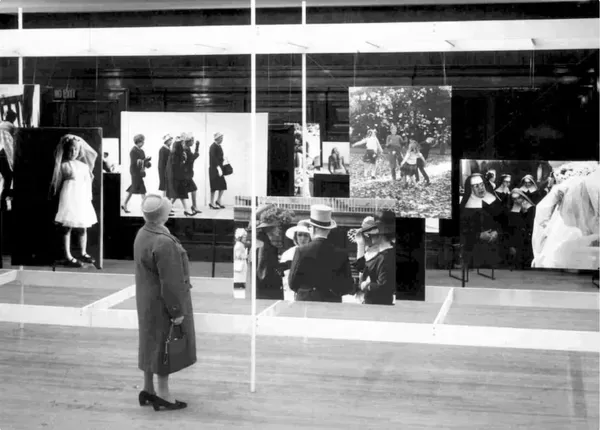

“Urban Woman” represented the boldest and most accessible endeavor undertaken by a collective of amateur photographers based in Melbourne, known as Group M. This group included Albert Brown, George Bell, Roy McDonald, and John Crook, all of whom were earnest educators and chemists driven by the spirit of social documentary photography.
Comprising more than 200 predominantly candid, long-focal-length images, contributed by 13 male photographers, “Urban Woman” was meticulously curated by designer Max Forbes. Inspired by the photographers’ keen observation of the “loneliness” experienced by young suburban mothers, their objective was to “confront reality with an open-minded perspective.”
It is noteworthy that the fact that this exhibition about women was entirely created by men went largely unnoticed, despite the extensive press attention it garnered.
Conceived as a direct response to the global sensation “The Family of Man” which made its way to Australia in 1959, “Urban Woman” resonated with a similar humanist sentiment. Its design incorporated purpose-built wooden structures to showcase oversized, unframed prints, with subjects arranged in a progression from youth to old age.
6. Frontiers, National Gallery of Victoria, 1971
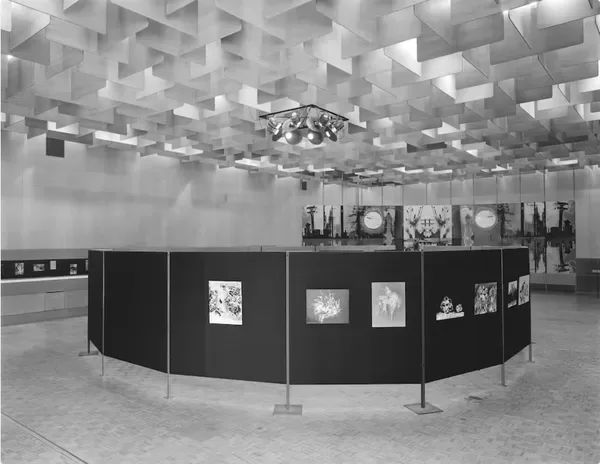

In 1967, the National Gallery of Victoria marked a historic moment by becoming the first Australian gallery to establish a dedicated photography department, despite encountering resistance from some trustees—one of whom dismissed photography as a “shortcut to painting.” This move was particularly notable as, at that time, only a few such departments existed worldwide.
The exhibition “Frontiers” showcased the experimental and abstract photography of John Cato, Peter Medlen, Stanislaus Ostoja-Kotkowski, Mark Strizic, and John Wilkins. It’s worth noting that all-male photography exhibitions were a prevailing norm until the groundbreaking displays of feminist photographers like Sue Ford and Carol Jerrems in the mid-1970s.
The works featured in “Frontiers” were decidedly contemporary, even bordering on the psychedelic. John Cato’s collection, focused on environmental protest, included 52 prints presented on vivid crimson screens with strobe lighting. Stanislaus Ostoja-Kotkowski’s light transparencies, created using laser beams and infra-red techniques, were illuminated from spotlights suspended from the ceiling. Mark Strizic unveiled a striking 10-meter color mural, which regrettably met its demise due to severe fading over time.
7. William Yang, Sydneyphiles, Australian Centre for Photography, 1977
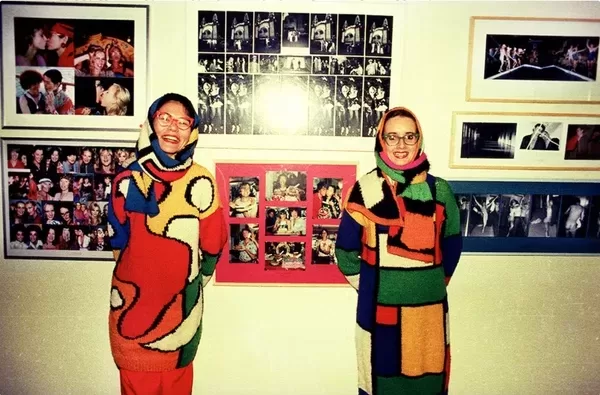

Photographer William Yang documents Sydney gay scene in 1970s
In 1977, William Yang utilized the walls of the newly established Australian Centre for Photography as a canvas for his deeply personal exhibition, “Sydneyphiles.” This marked Yang’s inaugural exhibition, where he displayed a collection of both color and black-and-white photographs on a small scale. These images offered an intimate glimpse into Sydney’s gay community and its vibrant intersections with the worlds of art, fashion, and high society. They were arranged closely, stacked above one another, enveloping the walls like an enormous, individualized scrapbook.
The significance of “Sydneyphiles” extended beyond its provocative and controversial portrayal of sexuality. This exhibition represented an early instance of the Centre moving away from the more traditional, framed, black-and-white modernist photography tradition. Notably, it may have been the first exhibition by an Asian-Australian photographer, and it actively involved its community in the event, as the press release highlighted Yang’s gesture of inviting many of his photography subjects to attend. Yang himself later acknowledged that this exhibition served as his launching pad into the realm of photography.
8. National Aboriginal and Islander Photographers Exhibition, Aboriginal Artists Gallery, Sydney, 1986
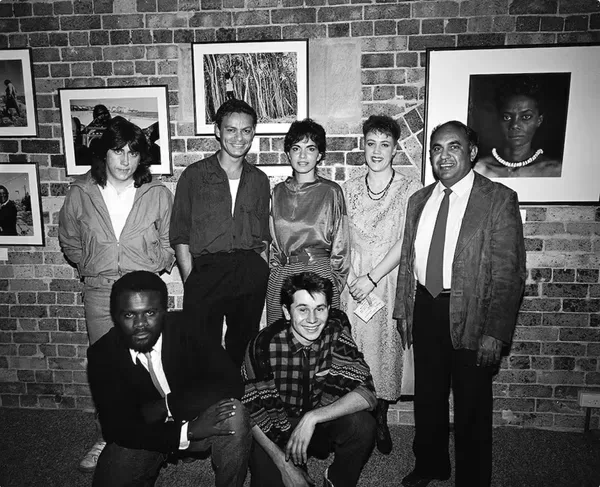

In 1986, a groundbreaking exhibition occurred during what is now recognized as NAIDOC week, marking the first time that Aboriginal individuals had control over their own photographic presentations. On the unadorned brick walls of Sydney’s Aboriginal Artists Gallery, ten Indigenous photographers showcased their works.
Among the contributors were notable figures such as Mervyn Bishop, Australia’s pioneering Aboriginal press photographer, as well as Brenda L. Croft, Michael Riley, and Tracey Moffatt, who would later emerge as influential figures in the realm of Australian art.
The exhibition featured photographs that would subsequently become iconic, including Moffatt’s striking portrait of actor David Gulpilil, casually relaxing at Bondi Beach in board shorts and face paint.
The exhibition achieved instant success, although Moffatt offered a somewhat wry comment: “To be honest, we got the kind of publicity which makes me want to vomit; e.g. ‘they’re Aborigines, they’re articulate, and gee whizz, they take good pictures’ sort of stuff. I guess I shouldn’t complain because we got a lot of people coming through looking at the show and buying work, which is what we do like!”
9. Photography Is Dead! Long Live Photography!, Museum of Contemporary Art, Sydney, 1996
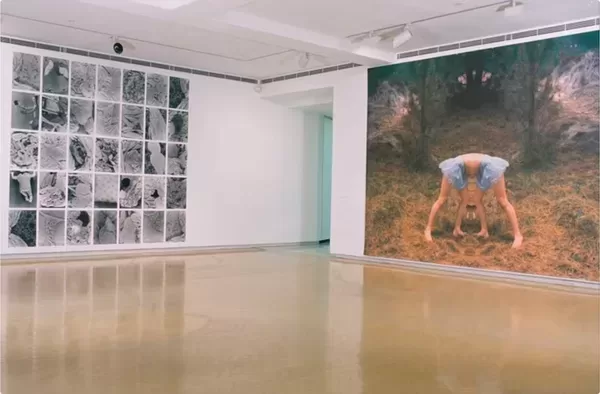

In 1996, during a period when the landscape of photography was undergoing significant transformation due to the influence of digital technology, the Museum of Contemporary Art presented the exhibition “Photography Is Dead! Long Live Photography!“
Curated by Linda Michael, this exhibition featured 32 artists who were, in her view, “artists using photography” rather than traditional photographers. They approached photographs not merely as transparent windows into the world but as tangible materials with inherent properties.
The display encompassed a diverse range of presentations: some of the larger, unframed prints gracefully extended from the walls, while others were affixed to aluminum, embracing an industrial aesthetic. Some works were crafted with an expressionistic approach, featuring cut-up elements, while others were physically sculpted.
Certain pieces, like Jane Eisemann’s surrealistic compositions and Patricia Piccinini’s glossy, advertising-style portraits of a celebrity holding a genetically modified pet, were digitally generated, with computer manipulation as an integral component of their intended meaning.
10. Hoda Afshar’s Remain, The Substation, Melbourne, 2019
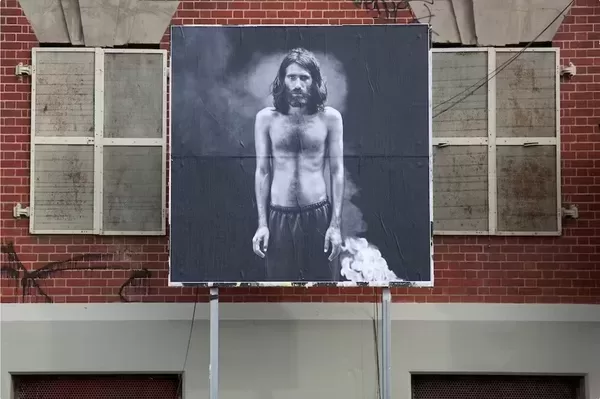

Photographs have had a longstanding presence in the public domain, often serving as conduits for corporate messaging, whether in the form of projections or billboards. To convey different narratives, artists like Hoda Afshar, originally from Tehran and now based in Melbourne, have harnessed the affordability of large-scale printing to lend a voice to marginalized communities.
In 2019, Afshar unveiled her striking collaborative portraits of asylum seekers detained by the Australian Government on Manus Island. These images, towering at 2.4 meters in height, were prominently displayed on billboards adjacent to the train line running alongside The Substation in Newport, a suburb in western Melbourne.
One of these portraits, featuring Iranian journalist Behrouz Boochani in an iconic, Christ-like pose, had already gained recognition, earning a prominent photography award and appearing in newspapers as well as on Afshar’s influential Instagram account, which is arguably one of the most significant platforms for photography in our contemporary era.
However, the public exhibition heightened the political resonance of her haunting black-and-white portraits, introducing them to new and diverse audiences. As Afshar aptly stated, “When you make a socially and politically engaged work, the intention is to communicate with the people”.
Further reading
Installation View: Photography Exhibitions in Australia (1848-2020) published by Perimeter Editions in 2021.





